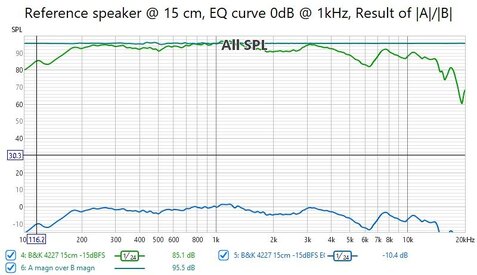Audio_Guy_UofW
Member
Thread Starter
- Joined
- Sep 2, 2020
- Messages
- 42
More
- Preamp, Processor or Receiver
- Denon AVR-4700
- Main Amp
- Neurochrome Modulus 686 for music
- Additional Amp
- Topping Pre90 preamp for music
- Computer Audio
- Roon
- DAC
- SMSL M500
- Universal / Blu-ray / CD Player
- Panasonic DP UB-820; Oppo UDP-203
- Front Speakers
- PSB Imagine X2T, Magnepan 1.7i (for music)
- Center Channel Speaker
- PSB Imagine XC
- Surround Speakers
- PSB Alpha
- Surround Back Speakers
- PSB Alpha Mini
- Front Height Speakers
- Totem KIN IC6 Slim (Front O/H)
- Rear Height Speakers
- Totem KIN IC6 Slim (Rear O/H))
- Subwoofers
- 4 sealed subs with 12" drivers custom built boxes
- Other Speakers or Equipment
- Mini DSP 2x4 Balanced; HD Fury Diva; MSO sub tunin
- Video Display Device
- JVC DLA X500
- Screen
- EluneVision 96" Acoustically Transparent
- Remote Control
- Harmony Elite
- Streaming Equipment
- Nvidia Shield Pro; Roopiee Raspberry Pi
- Streaming Subscriptions
- Tidal
- Other Equipment
- Thorens TD-160 Super, SME tonearm, Shure V15 IV with Jico SAS stylus, Arcam rPhono preamp
Hi John, thanks for your great support. I have initiated a monthly contribution in support of your efforts.
My question is perhaps outside the normal use of REW. I am trying to measure a microphone response. I would like to first measure the speaker response at a given position using my calibrated measurement microphone, then use that response to "correct" the response of the test microphone to compensate for the non-flat response of the speaker. So for example, if I set a reference level at 1khz, and the response of the speaker is down 5db at 100Hz, then the correction curve will boost the measured mic response by 5 dB at 100Hz. I'm wondering how best to generate this correction curve. One thought was to generate a special soundcard calibration that includes the speaker? Not sure if this is practical. Another is to use Trace Arithmetic, but I did play around with that and was not able to come up with a suitable correction curve. Wondering if you have any suggestions? Thanks.
My question is perhaps outside the normal use of REW. I am trying to measure a microphone response. I would like to first measure the speaker response at a given position using my calibrated measurement microphone, then use that response to "correct" the response of the test microphone to compensate for the non-flat response of the speaker. So for example, if I set a reference level at 1khz, and the response of the speaker is down 5db at 100Hz, then the correction curve will boost the measured mic response by 5 dB at 100Hz. I'm wondering how best to generate this correction curve. One thought was to generate a special soundcard calibration that includes the speaker? Not sure if this is practical. Another is to use Trace Arithmetic, but I did play around with that and was not able to come up with a suitable correction curve. Wondering if you have any suggestions? Thanks.














